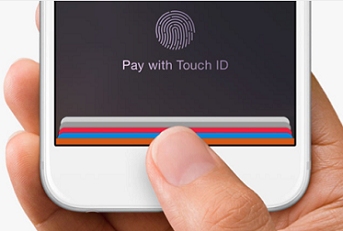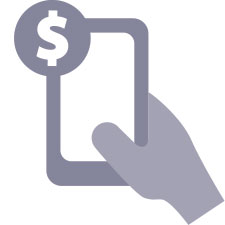Mobile Payment Services
There’s been a lot of buzz going around about mobile payment services, especially with the recent release of Apple Pay. So what exactly are mobile payment services? Simply put, this technology allows a user to pay for a good or service using their personal mobile device, such as a smartphone or tablet.
Mobile payment services include digital wallets, which securely stores the user’s payment credentials for purchasing. Proximity-based technology is also being used for mobile payments as seen with Apple Pay’s use of near-field communication (NFC). With NFC implementation, mobile transactions are initiated by holding your connected device within close proximity of a NFC payment terminal.
Within just 72 hours of launch, over one-million payment cards were activated within Apple Pay. That’s incredibly impressive. Google Wallet, which was released back in 2011, hasn’t had nearly as much success at launch. In fact, just over the past couple months Google Wallet finally saw transactions rise by 50% and new users doubling. So why the sudden success in NFC mobile payments when it’s been around for years now?
All About the Brand
Apple has quite the following. Their recent livestream of the Apple Event in September caused their website to crash due to the number of viewers. And although a recent comScore Report shows Android has the highest percentage of smartphone subscribers by platform with 52% over Apple at 42%, Apple’s iPhone makes up 42% of the market with Samsung in second with just 28%. Apple’s marketing efforts have been far greater than Google’s too. Apple’s iPhone site includes a detailed description of Apple Pay, while the Nexus 6 site tells nothing of its mobile payment capabilities.
 Increased Security Measures
Increased Security Measures
The issue of security is often brought up with the idea of mobile payments. People fear their payment information is in jeopardy when using these unfamiliar technologies. Google Wallet grants transaction access through a 4-digit-pin.
For Apple Pay, payments are authenticated with Apple’s fingerprint scanner Touch ID. This unique security measure gives their payment service a bit more credibility. Payment information is encrypted and securely stored for both. Continuous advancements in technology security will increase the number of consumers who feel comfortable using this new technology.
Wide Spread Support
Check out all of Apple’s participating credit cards, banks, stores, and app that support their mobile payment service. And that list is still growing. Even Starbucks, who is already successful with their mobile app payment service, will allow Apple Pay in their stores later this year. However, some retailers are looking elsewhere for this service.
With the development of CurrentC, a mobile payment platform in the works by MCX, CVS Pharmacy and Rite Aid have disconnected their Apple (and Google) mobile payment. This has caused several consumers to be outraged that they are no longer able to perform this type of transaction when they’ve been doing so since 2011 with Google Wallet. With CurrentC releasing “sometime in early 2015,” we will continue to see how this lack of adoption will affect these and other non-participating businesses.
Mobile Payment Predictions
Although the success of mobile payment services has only been seen in the last couple months, it’s only the beginning. Just by the end of this year alone, Statista predicts 89 million Americans will be accessing mobile banking services via their mobile phones. Juniper Research also recently stated: “We would now argue that Apple Pay will not only drive, but will create a ‘halo effect’ towards contactless payment in general. We still believe that in most markets this will primarily be driven by contactless card transactions, but that the greater awareness of handset contactless payments that Apple will generate will, in turn, result in an uplift in adoption and usage.”
 Conclusions for your Organization
Conclusions for your Organization
Because mobile payment services are expected to soar over the coming year, you should consider how your organization could adopt this technology for its benefit. For associations, there are several ways mobile payment can be exploited. Event registration, membership dues, certification, training, and donations are all susceptible to this technology.
Event planners should consider placing NFC readers at transactional locations to speed up the service and prevent long lines. Or consider developing association apps that incorporates mobile payment. This would give members and attendees alike an easy, convenient way to pay for their member and conference expenses.
Interested in learning more about the latest trends in mobile? Check out our 2015 Strategic Mobile Trends for Associations and Event Leaders whitepaper!



